
Venus, Sun, Crater Alexander, and SN 2012cg Spectrum
Posted: 27 May 2012
Saturday, 26 May, was another windy day; gusts to 25mph. I opened the observatory at 1732 MST, 93°F. The sky was hazy but no clouds. And the wind had calmed down from eariler in the day. I opened the observatory almost two hours before sunset to view Venus higher in the sky. I also wanted to do some solar viewing. At 1738 MST, viewed Venus, 77X and 206X. The crescent was very thin. I did some HD video recordings using the D7000 DSLR at prime focus + 2X Barlow Lens on the 8" LX200-ACF. Unfortunately, seeing was so bad that stacking the frames was impossible. I did find one good frame on the 1/640sec, ISO 640, recording:
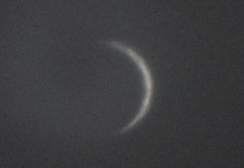
At 1753 MST, I viewed the sun in the 8" using the Orion white light filter and in the PST that was piggybacked on the 8" LX200-ACF, as seen here in an earlier photo:
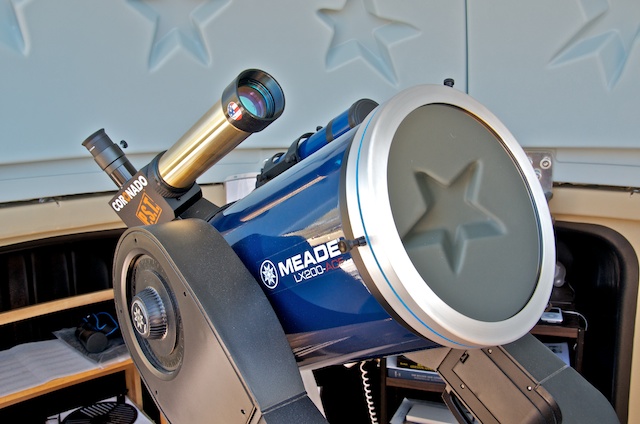
In white light at 77X, there were three small sunspot groups visible. In the PST, 32X, there were nine prominences and ten long filaments visible. I captured this solar image at prime focus of the 8", 1/500sec, ISO 640:
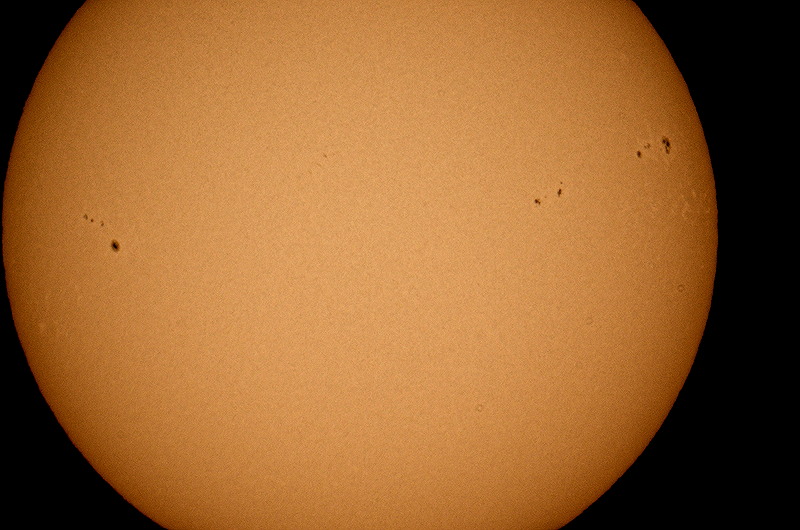
The photo accurately shows the details that were visible in the eyepiece. At 1812 MST, I did some more sun viewing, 77X and 133X. I tried 206X but the seeing was not good enough.
I then removed the solar filter and PST from the 8" and returned to Venus for some more viewing, 133X. Seeing was pretty bad.
At 1839 MST, I slewed the 8" to the moon, high in the sky and viewed it at 77X and 267X. The bright highlighting on the wall of Crater Alexander was interesting. I decided I would try to capture it. At 1951 MST, I began lunar imaging at prime focus + 2X Barlow Lens. This cropped image, "Hat Trick", ISO 400, shows the craters (left-to-right) Aristoteles, Eudoxus, and Alexander:
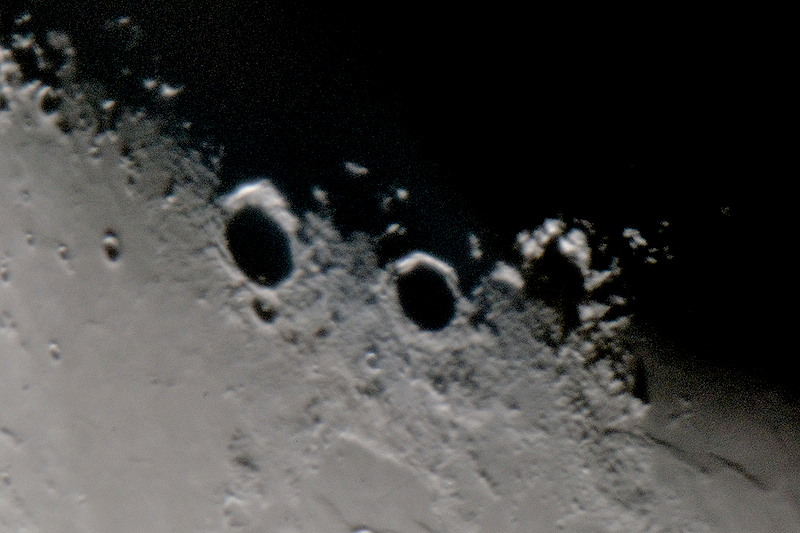
Ended lunar imaging at 1859 MST. I did some lunar observing, 206X. Then to Mars. Seeing was so bad that making out any details on the planet was difficult. Viewed Saturn. At 77X, four moons were visible: Titan, Rhea, Tethys, and Dione. The view was nice at 133X but seeing was not good enough for 206X.
At 2024 MST, I went to the galaxy NGC4424 and at 77X against a still bright sky, supernova SN 2012cg was visible. I wanted to try to capture a better spectrum of the supernova from the one I was able to get on the previous session. At 2030 MST, I began setting up for the imaging. To assist me in identifying the spectra captured with the "Star Analyzer", I took this unguided, 2 minute, ISO 2000, prime focus image:
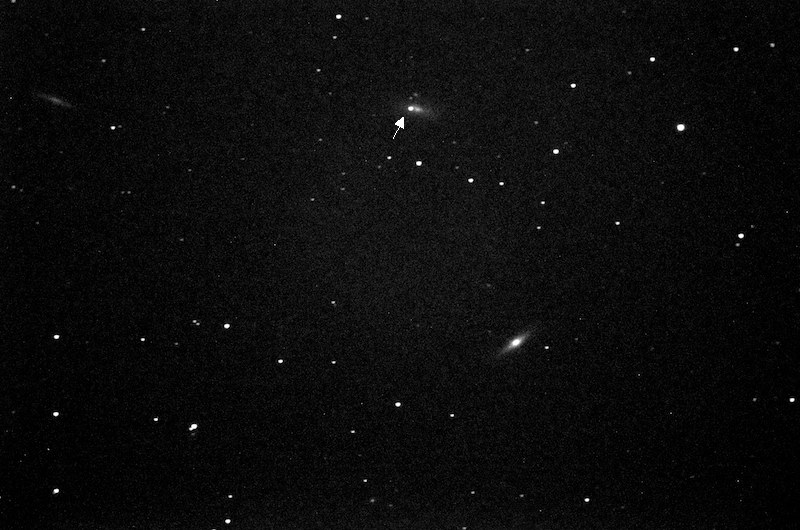
NGC4424 is at the top, with the supernova arrowed. (Two other galaxies have been captured in this short exposure: NGC4417, below and to the right from NGC4424, and NGC4445 in the upper left corner.) I then took a series of unguided images at different exposure lengths, ISO 2000. This is a 2 minute exposure:
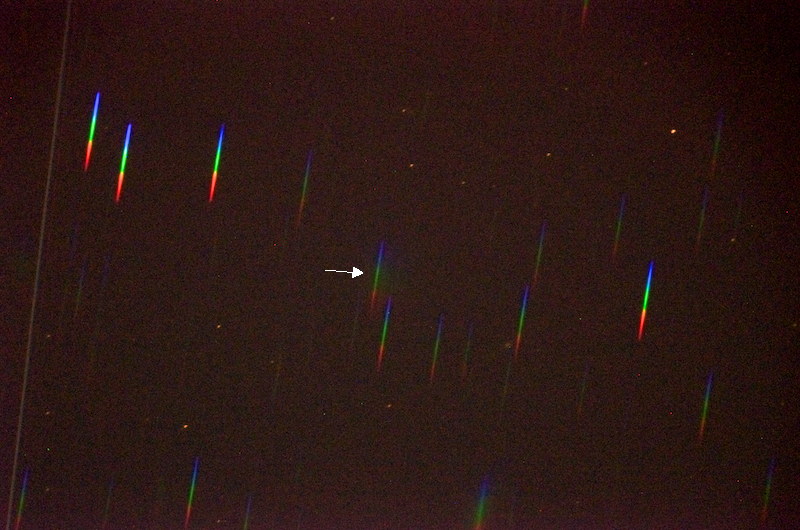
The spectrum of SN 2012cg is arrowed. This is the processed spectrum, although I suspect most of the "lines" are artifacts from digital noise in the image:
![]()
Closed the observatory at 2104 MST, 60°F.
Comments are welcome; use the Comments section below, or you can Email Me. Thanks.
Go to the previous report.
Return to the Cassiopeia Observatory Welcome Page.